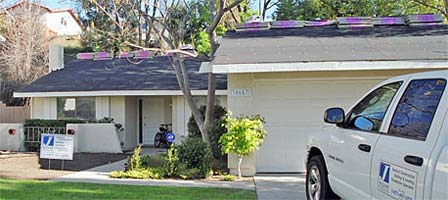Indications Of Roof Disrepair Important To Watch For Says Construction Company
 LOS ANGELES, CA: Julian Construction, Inc. (http://www.julianconstruction.com/) has recently compiled a list of the common roof problems to be encountered as well as some of the indications of the problems. The company urges homeowners to take fast action on recognizing any indication of roof weakness, before more serious problems occur which could endanger the occupants of a home and ultimately cost a lot more to fix.
LOS ANGELES, CA: Julian Construction, Inc. (http://www.julianconstruction.com/) has recently compiled a list of the common roof problems to be encountered as well as some of the indications of the problems. The company urges homeowners to take fast action on recognizing any indication of roof weakness, before more serious problems occur which could endanger the occupants of a home and ultimately cost a lot more to fix.
1) Design Issues,
2) Improper Installation,
3) Poor Maintenance,
All of the above should be looked into as soon as possible and corrected.
Julian De La Torre, founder of Julian Construction, stated: “We definitely run into roof difficulties that have gone on too long. If it’s caught too late or someone delays before they call a company to repair it then you’ve got a real problem on your hands. Most of the really difficult roof problems were caused because they weren’t fixed soon enough when the first signs were there. Definitely a homeowner should quickly repair roof damage in their home." Julian Construction owns its own company and is built on a “no middlemen” model – no salesmen, no subcontractors. When you work with Julian Construction you get the principals of the company and workers of Julian Construction under your home. The result is the highest quality work at affordable prices. They can be contacted by phone at 323 733-3377, by fax at 323 733-4477 or via their website, www.julianconstruction.com. You can see tips and advice about home foundations on their blog, at http://julianconstruction.typepad.com. LOS ANGELES, CA: Julian Construction, Inc. (
LOS ANGELES, CA: Julian Construction, Inc. ( When a house settles, it can result in foundation cracks, including vertical cracks, diagonal cracks, and horizontal cracks. Cracking can also occur due to overload and drying shrinkage. Repairing foundation cracks will prevent them from spreading and help restore the structural integrity of your home. It will also minimize the potential for more serious foundation problems.
When a house settles, it can result in foundation cracks, including vertical cracks, diagonal cracks, and horizontal cracks. Cracking can also occur due to overload and drying shrinkage. Repairing foundation cracks will prevent them from spreading and help restore the structural integrity of your home. It will also minimize the potential for more serious foundation problems.